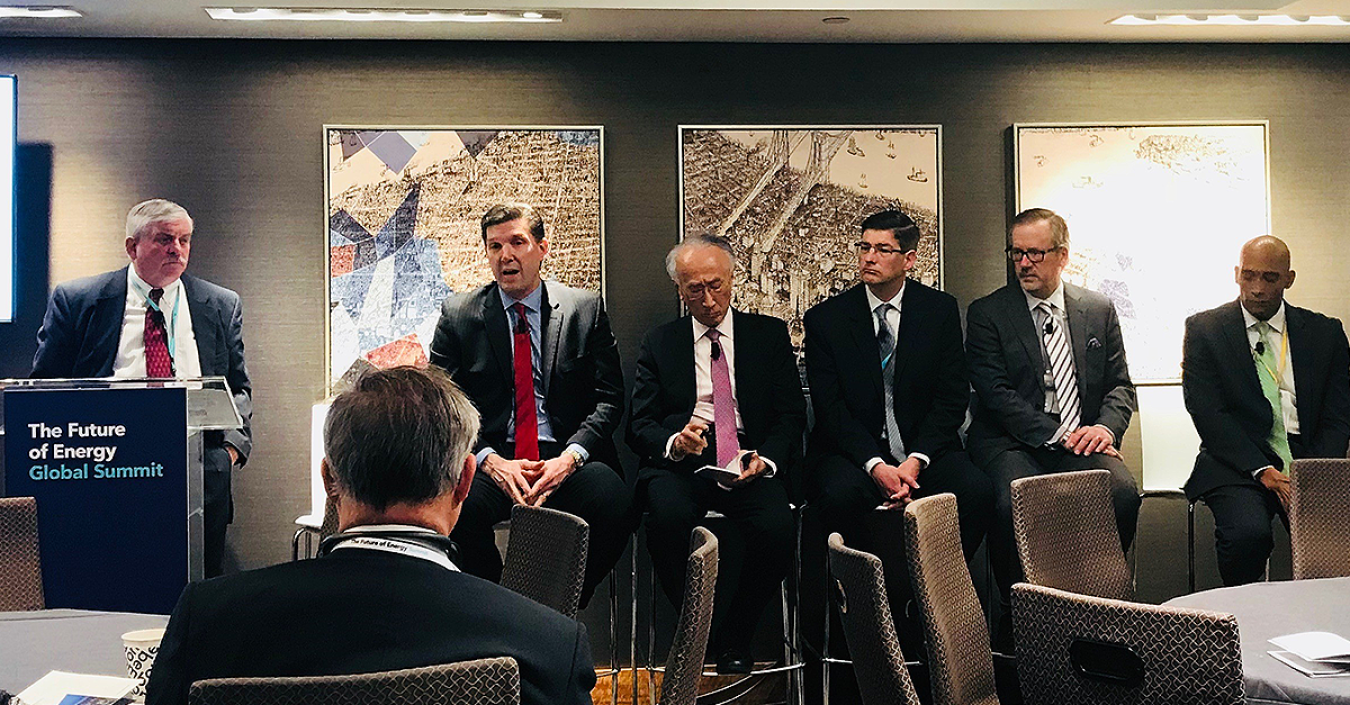Nuclear energy is riding a wave of innovation that could be a game-changer for nuclear power and the nation’s energy mix.
April 10, 2018
The U.S. Department of Energy's Ed McGinnis (second from left) talks about the future of nuclear power in the United States.
Don’t call it a comeback. Call it a resurgence.
Nuclear energy is riding a wave of innovation that could be a game-changer for nuclear power and the nation’s energy mix.
That was the message driven home by Ed McGinnis of the U.S. Department of Energy (DOE) during a panel discussion at the Bloomberg Future of Energy Global Summit in New York.
“The stars have aligned and now is the time to act,” said McGinnis. “We have unprecedented support from the Trump Administration, bipartisan support from Congress and industry is leading the way in advanced technology design.”

Join the Conversation
Transitioning to Advanced Reactors
Today, 99 reactors provide nearly 20% the country’s power and about 60% of its clean energy, but new “disruptive technologies” are poised to transform the industry.
According to McGinnis, the majority of the nation’s reactor fleet is licensed for 60 years, with some looking to extend to 80 years.
That will give the United States more time to transition to advanced reactors.
We are leading the way on cutting-edge designs of advanced reactors. This new class of reactors will be disruptive to the energy markets in the next 8 to 10 years.
Small Modular Reactors
McGinnis said small modular reactors (SMRs) are key to the future of nuclear power.
SMRs and other U.S. advanced reactor designs have a host of benefits, including the ability to provide flexibility and resiliency to the grid.
McGinnis also talked about innovative passive cooling designs that don’t require pumps or operator action like current reactors in order to safely shut down.
“This technology is well-positioned to positively disrupt energy markets,” said McGinnis. “For example, it will make more areas accessible to nuclear, which continues to make a tremendous contribution to our emissions-free electricity generation.”

Learn more about DOE's Office of Nuclear Energy.

